The microcontrollers like the Arduino, PIC, MSP430 and many others cannot do it all by themselves on a project, so they need the peripherals for both the devices to be controlled as well as for the input devices.
These are known by shields, which we mention several times on this website and we even give common circuits that may be used for this purpose.

Shields are relays, power FETs and bipolar transistors which enable us to make a microcontroller control a stepper motor or a DC motor of high current.
However, there are other peripherals that are useful when working with a microcontroller and these are the Breakout Boards.
Breakout Boards
As the name suggests, these boards contain a single component which because of its very small dimensions cannot be directly connected to a microcontroller board by its outputs and so they are "broken" or expanded in order to have access to its terminals, as shown in Figure 2.
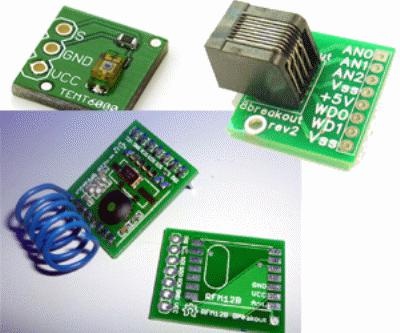
This allows us to work with this unique component coupled to a microcontroller, to develop a project, to evaluate its functioning, or to complement a project that requires its presence.
This is the case of an integrated circuit which has its pins made accessible so that they can be easily connected to a microcontroller.
It is equivalent to a solderless board, but in the form of a printed circuit board with a component or some components already welded, as shown in Figure 3.
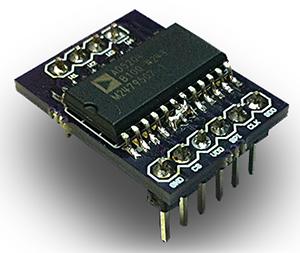
The advantages of using these boards are varied.
Besides the size, as integrated circuits can be SMD instead of conventional DIP or DIL and do not need to be built in a contact matrix, we have the advantage of safety contacts, because we can use the welding interconnectors.
This allows the achievement of more compact assemblies as the IoT projects, wearable and others which require in many cases.
Another advantage is the possibility to use the same board in other projects, as long as the microcontroller connection terminals are desoldered.
We can also mention a very important fact that greatly facilitates developers is the fact that the names of the pins are perfectly identified on these boards.

See that there is a difference between a shield and a breakout board. The shields contain complete circuits with certain functions, being typically higher.
The breakout boards contain one or a few specific components to be used in the functions of the components and not a circuit function. They are smaller and simpler.
Of course, in some cases, the function of a particular breakout board can be the same as a shield, but it doesn’t always happen and if it does, the breakout board can make the same in a simpler way.
To work with a breakout board one must take into account a difference.
They must be welded, which implies the need to have a welder and have skills in this type of operation, always paying attention to the excess of heat.
You must also be aware of the voltages that the components they contain can support by choosing the appropriate way to power both the microcontroller board and the additional external source.
At Mouser Electronics you can find many types of Breakout Boards from several manufacturers as you see below.
In Figure 5, for example, there is a 1782 Ardafruit breakout board which contains a MCP9808 temperature sensor capable of operate with voltages from 2.7 to 3.3 V. See further at:
http://www.mouser.com/ProductDetail/Adafruit/1782/?qs=sGAEpiMZZMsMyYRRhGMFNqfAsqVvK2G% 252bGk7vhDqZ1mk% 3d
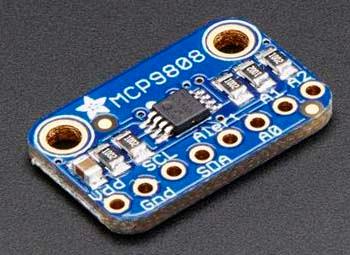
In Figure 6 we have a Breakout Board containing an electret microphone. See more at:
http://www.mouser.com/ProductDetail/Adafruit/1063/?qs=sGAEpiMZZMsMyYRRhGMFNv0uHKx3nOdatXD%2fu6SYbNA%3d
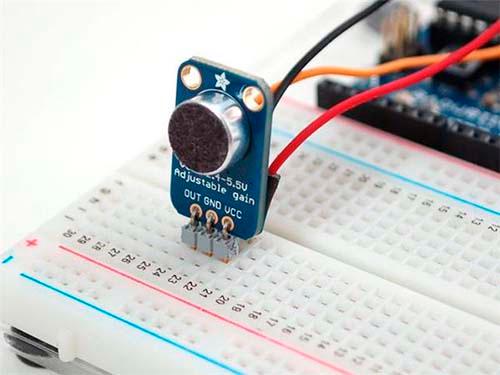
Note that this board contains pins that fit in a contact matrix from which can be coupled to the microcontroller.
The breakout board shown in Figure 7 contains a moisture sensor and a temperature sensor being manufactured by Ardafruit and available at Mouser on:
http://www.mouser.com/ProductDetail/Adafruit/1899/?qs=sGAEpiMZZMsMyYRRhGMFNmDDclviQzyaRUeZcCL57lk%3d
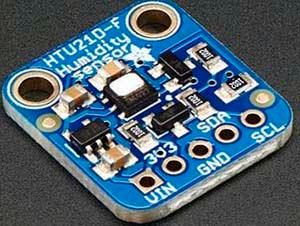
In Figure 8 we have a breakout board containing a capacitive touch sensor of 12 keys.
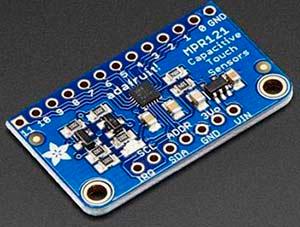
For most of these boards there are development tools that allow to evaluate its operation and develop the project using specific microcontrollers like the Arduino.
We suggest that the reader types "breakout board" in search on Mouser website: (www.mouser.com), because next to each board you can access technical information in datasheets.



